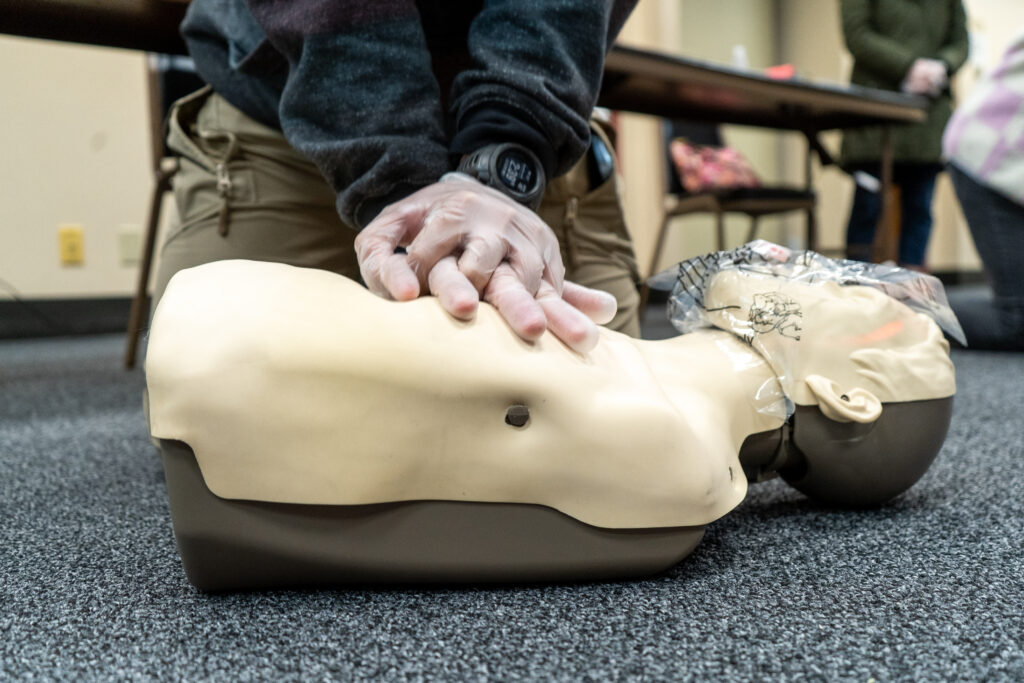2024 American Heart Month Focuses on Prevention and Education
Harriet Vanderbilt, Red Cross Cascades Region
In 1964, President Lynden Johnson issued the initial proclamation declaring February American Heart Month. The goal is for everyone, everywhere to raise awareness around heart disease and learning how to prevent it. Understanding heart disease, practicing preventative steps, and learning how to save a life are the key factors in reducing heart disease nationally.

What is heart disease? There are numerous kinds, the most common type being coronary artery disease (CAD). CAD affects blood flow to the heart. A decreased flow may lead to a heart attack. There are various symptoms of heart disease, although it may be “silent”, lying undiagnosed until heart attack or heart failure happens.
Knowing major risk factors for heart disease is an important factor in prevention. Most notable among those factors are diabetes, being overweight, eating a diet heavy on fats and calories, physical inactivity, excessive alcohol consumption and smoking. In 2021, 595,000 Americans died from heart disease, which is approximately 1 in every 5 deaths.
Choosing healthy habits is vitally important. Diet is of upmost concern. Select healthy meal and snacks, making sure that fresh fruits and vegetables head up the list. Avoid foods loaded with saturated and trans-fats. Choose instead high fiber foods. Limit salt in preparing meals. Too much salt, and sugar, may cause blood pressure to rise too high.
Keeping a healthy weight and limiting alcoholic intake plays into prevention of heart disease. Two drinks a day for men and one for women is the standard measurement. Do not smoke! Get regular physical activity to maintain a healthy weight, lower blood pressure, blood cholesterol and blood sugar levels. It is recommended that adults get 2.5 hours of moderately intense exercise, such as biking or brisk walking, every week. Children and adolescents should get one hour a day.
Take charge of your health. Cholesterol levels need to be tested every 4 to 6 years, more often when there is a family history of the condition. Have blood pressure checks at least every 2 years. Buy a home blood pressure machine and monitor blood pressure regularly. Manage other health conditions. Follow the directions on taking medicines. Ask questions when in doubt.
Family history, age and gender may contribute to a high risk of heart disease. The risk increases with age. Heart disease is the leading cause of death for men and women in the United States. High cholesterol is often related to heredity. Cholesterol is a waxy substance found in foods as well as in the liver. High cholesterol has no symptoms. A simple blood test measures levels of cholesterol. Various medications are available to control the levels.

Education is a powerful tool to help in the prevention of heart disease. The American Red Cross offers a large number of educational classes. Cardiopulmonary Resuscitation (CPR) and Automated External Defibrillator (AED) training is available ongoing. Please visit www.redcross.org/take-a-class/cpr to register. Learn how to save a life!